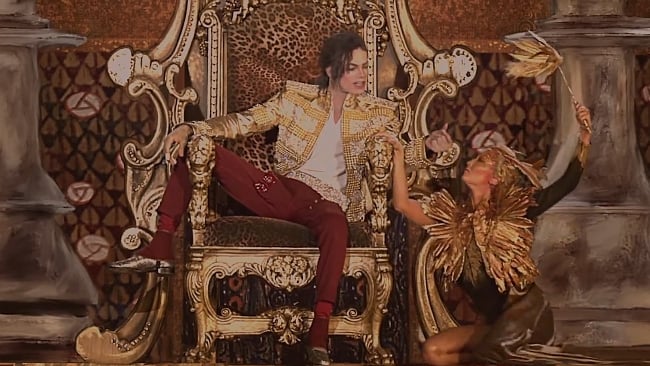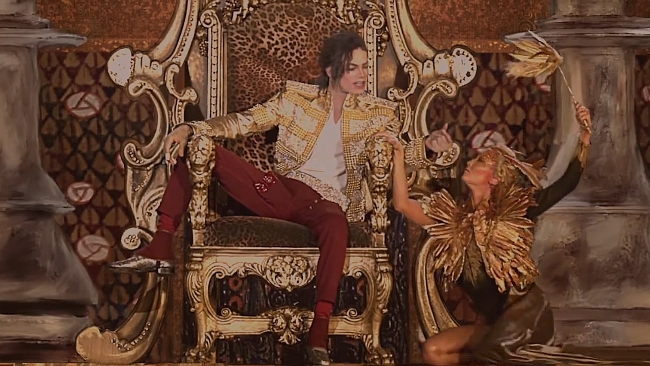

It takes two RED Dragon cameras, dancers, a team of filmmakers, animators and VFX artists, "multiple millions," a large plane of glass and a willingness to believe.
Whether it's Michael Jackson, Tupac or Audrey Hepburn, collectively we have a hard time letting go of the stars from yesteryear. And as technology continues its forward march, we're confronted with the question "do we really need to let go at all?"
That question reared its head during the 2014 Billboard Music awards, which showcased the King of Pop himself, in a posthumous 'holographic' stage performance of his hit Slave to the Rhythm. Now, to those that read up on Tupac's surprise appearance at Coachella 2012, it should be no surprise that Michael Jackson's recent return wasn't exactly a 'hologram', but rather an optical illusion which dates back to the 1500s.
Pepper's Ghost
The optical phenomenon was first described in 1584 by Giambattista della Porta, the creator the camera obscura. In Porta's Magic Naturalis, or Natural Magic, he briefly explained "how we may see in a chamber things that are not," describing the combination of glass, perspective, and light necessary to pull off the trick. But it wasn't until 1863, when John Henry Pepper devised an inexpensive means to retrofit theaters for the illusion, that the technique became popularized and the nickname Pepper's Ghost caught on.
Flash forward to 2014, and event producers are dusting off Pepper's Ghost for their own extraordinary purposes. But the modern technique for its stage presentation is remarkably similar to those early applications of the technique. There's a projector mounted out of view (these days, usually mounted above the stage); it rear-projects an image onto pane of glass, perpendicular to the projection beam. Additionally, there's another pane of glass at the stage level, angled backstage 45-degrees, to catch the reflection. If you look at the stage relatively straight-on (notice from the Michael Jackson performance how far downstage he plays), you'll experience the illusion, in all its one-gloved glory.
The hard part? Everything else...
Sounds simple, right? Ready to make some (sort-of) holograms of your first dog Fluffy? Well, let's take stock of everything else it took to bring Michael Jackson back from the dead: Three productions companies (Optimum Productions, Pulse Evolution, and Tricycle Logic) creating a seamless experience combining live action, recorded, and animated elements; two RED Dragon image-stitched for an 8K resolution, shooting the ornate background and MJ's dance partners; a fully-realized 3D-modeled, textured, and choreographed 1991-era Michael Jackson; and according to Frank Patterson, CEO of Pulse Evolution, "multiple millions," unless you have the producing chops to get all these talented artists and specialists to work for free.
The Uncanny Valley
Our Editor, David Shapton, wrote about the Uncanny Valley in a 2013 RedShark article, but anyone who has seen early CGI-animated humans understands the pitfalls of getting close to the real thing, but not close enough (i.e. Polar Express). Pulse Evolution, handpicked by the Jackson Estate to realize the 'holographic' MJ, spent six months researching all available performance videos and coding a reasonable facsimile. But it took extra effort to make this perfect, dancing, singing illusion into something more...human, down to animating the hair, gestures, facial expressions and subtle nuances; in essence, everything needed to traverse that uncanny valley, to successfully transform 'creepy' into 'amazing.'
For the faithful
So, how well did they pull off the Michael Jackson resurrection event? Watch the video below and see for yourself. I think the effect is good, a more stunning showing than 'holographic' Tupac, mostly due to the elaborate choreography and integration with live and recorded elements. It was probably more impressive in person, but this video will give you a flavor of that experience. There are reports of people literally crying during the performance, but I doubt anyone other than a hard-core MJ fan would be as emotional. For the faithful, it was a (perhaps) once-in-a-lifetime event, a chance to see their favorite star live one last time.
And that's where it's really at, using technology to will the impossible, to reconnect with our nostalgia and the way those entertainers of the past made us feel while they were alive. In the future, expect more of the same, pseudo-holographic sets from possibly John Lennon, or maybe Kurt Cobain...or you'll see your favorite Hollywood screen legend hocking chocolate.
Oh, these wondrous times!
(Thanks to USA Today and Ars Technica for some of the details in this report).
Tags: Technology


Comments